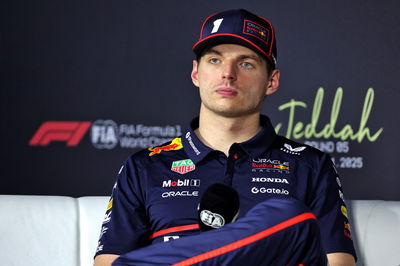'Hard to know' how blown diffuser ban will affect Renault

James Allison has conceded that it is 'hard to know exactly' how the forthcoming ban on using engine-mapping to operate off-throttle blown diffusers in F1 will affect teams individually - but contrary to what has been suggested in some quarters, he hints that the clampdown may actually affect Lotus Renault GP less than many of its rivals.
The sport's governing body the FIA has announced that as of next month's British Grand Prix at Silverstone, the aggressive engine-mapping practice - sending a full blast of exhaust gases into the diffuser when the driver is off the throttle in corners - will be outlawed.
The common consensus is that the move will hurt F1 2011 World Championship leaders Red Bull Racing and Renault the most - the latter due to the front-exiting exhausts on its R31 - but it is just such a unique feature that Allison reckons could prove to be the team's saving grace.
"The FIA's note will cause all teams - whether or not they use a blown-floor - to change their operation," underlined the Enstone-based outfit's technical director. "The headline changes for Silverstone are as follows; when the driver lifts his foot fully off the throttle pedal, then the ECU maps must be set up so that the engine - to all intents and purposes - closes the throttle. Previously, it was possible to configure the engine maps to leave the throttle open and reduce the engine power by other means.
"Furthermore, when the driver lifts fully off the throttle, the ECU maps must be configured to cut off the fuel supply to the engine - this is intended to prevent so-called 'hot-blowing', where the energy of the exhaust gas is increased by combustion. Finally, with immediate effect, it will no longer be possible to re-program the ECU configuration between qualifying and the race in the expectation that this will discourage extreme ECU set-ups for qualifying - previously, electronic access to the ECU under parc ferm? conditions had been explicitly permitted.
"It is not easy to judge the effect of this change on our competitiveness. The loss for each blown-floor car will come from two separate effects - how much downforce you lose and, in addition, how much the loss of this downforce upsets the balance of the car. We are looking to ensure that we make as good a job as possible of coping with the impending changes.
"All blown-floor cars will lose downforce under braking as a result of these new restrictions. Some teams will lose more and some teams less; it is hard to know exactly what relative loss Lotus Renault GP will suffer. However, it is possible that we will suffer less on the balance-shift side of the equation, because our forward-exit exhausts produce their effect quite near the middle of the car.
"This means that as the exhaust blow waxes-and-wanes, it does not really disturb the aero balance of the car too much. With a rearward blower, the downforce from the exhaust is all generated at the rear axle. As the new rules reduce the blowing effect on corner entry much more than corner exit, it is possible that the rearward blowers will tend to suffer more nervousness under braking and more understeer on exit as a result of the new restrictions. We will find out at Silverstone!"
Before Silverstone, of course, will come Valencia, the stage for this weekend's European Grand Prix - around a circuit at which Renault has finished inside the top six in the two most recent editions. Managing director Eric Boullier is anticipating 'a strong step forward' for the team around the harbourside streets of the Spanish city [see separate story - click here], and a successful Friday practice day, Allison contends, could well be pivotal to the realisation of that conviction.
"Valencia is dominated by low-speed corners," he mused. "Although there are a couple of fast corners, they are normally taken flat-out so the challenge, therefore, is to get the car working well in slow corners. Furthermore, as this will be the first opportunity to run the new medium tyre compound in a grand prix, it will be important to get settled on it quickly and to establish a good race set-up with it.
"We were not very happy with the performance of the car on either the full wet or intermediate tyres [in Montreal] - we were kept in the race as a result of a good reading of the rain radar and good strategy calls. However, once we got onto the dry tyres at the end of the race, we looked much more in the hunt and were able to make inroads on all but the top two cars.
"In changeable conditions like we saw there, it is extremely difficult to make the correct decisions all the time as there is a degree of luck involved. All that Alan Permane (chief engineer) and Matthieu Dubois (strategist) can do is to hope to have a good batting average. Thankfully, they are pretty reasonable at it, and in the last race they made another set of decent calls to leave us well-placed to capitalise on very difficult circumstances.
"We push as hard as we can from the first race to the last, and we try to bring new performance to every race in the championship. As always, there will be a host of aero updates [in Valencia]. The most significant of these will be a new, more efficient top rear wing with a bigger DRS-switching effect. This will bring outright lap time in qualifying and offer better overtaking potential during the race. The straight is long enough for DRS to function, and there is likely to be a reasonably different level of performance from the two tyre compounds. This will lead to plenty of overtaking."










